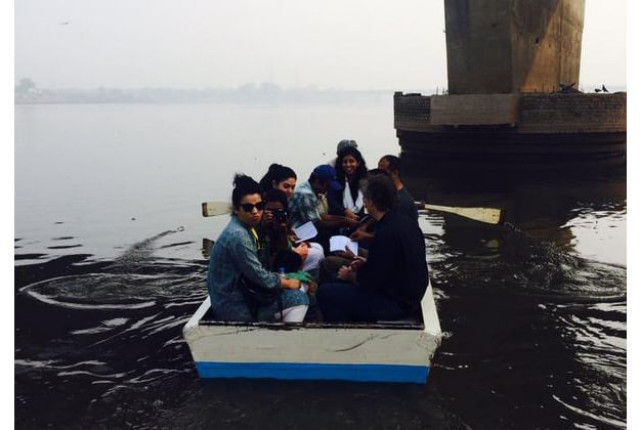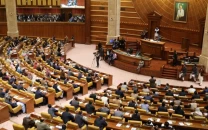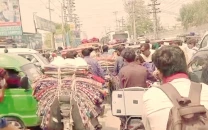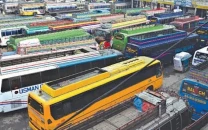The dying river: Exploring Ravi, its connection to Lahore
Workshop held to discuss pollution in Ravi River

A group of 19 people visited the Ravi River as part of the two-day workshop held by LBF. PHOTO: twitter.com/LBF2016
The Baradari is a Mughal-era structure constructed by Babar’s lesser-known son Kamran, who had sought refuge in the enclosure while battling his brother Humayun.
“Ravi is often called the dying river because of the sewage and toxic material dumped into it. However, it is still alive for the people who live nearby,” said Hajra Haider, an artist with the Tentative Collective. The collective’s latest project is titled: The Gandi Engine Commission. It is named after the non-functional water treatment plant built near the river.
The trip was part of the two-day workshop by the Lahore Biennale Foundation to explore the history of the river.

“In the Rigveda, the river has been called Parushni and was hailed as sacred and holy. Eventually, it was called Iravati, from which the name Ravi is derived,” Haider said.
“When the Aryans came here, they actually destroyed the series of canals and dams built by the locals. In the Rigveda, god Indra destroys a serpent controlling the river. It could be a reference to the destruction of the canals,” she said.
Moving on to colonial times, Shahana Rajani, another artist with the collective, said the British had thought that they could navigate the Indus River. “However, all the British attempts to use the Indus to transport goods upstream failed. Finally, in 1857, they gave up the idea and turned their attention to establishing a railway network,” she said. After this, they decided to use the river for irrigation purposes.
“The British eventually dug up a canal from the Ravi River and developed housing societies around it,” she said.
Fazal Rizvi, another artist with the collective, talked about the Ravi Zone Development project. “The language used in the advertisement sounds similar to the notion of development brought in by the British,” he said. “Perhaps the only good thing about it was that they decided to clean up the river,” he said.
Zahra Malkani, another artist with the collective, spoke about pollution in the river. “More than half of the flow in the river consists of waste. A total of 12 drains empty into the river,” she said.
The Tentative Collective also showed a book featuring 10 items that they had found from the river, including a skull, a handkerchief and a four of hearts.
“This is a wonderful attempt to connect arts with issues relevant to the city,” said Stefan Winkler, who works with the Goethe-Institut in Karachi. Natasha Anwar, an associate professor at the Forman Christian College University, said that she had been living in Lahore for 13 years and this was the closest she had come to the river.
Published in The Express Tribune, September 21st, 2015.



















COMMENTS
Comments are moderated and generally will be posted if they are on-topic and not abusive.
For more information, please see our Comments FAQ